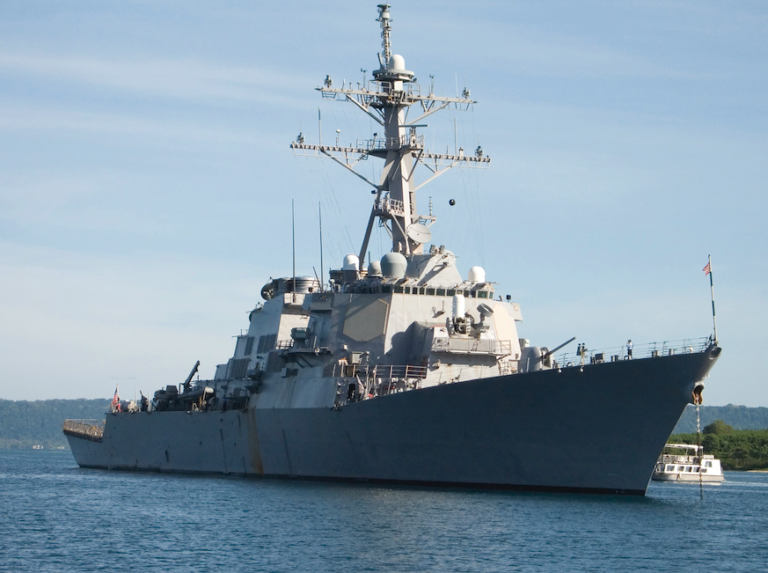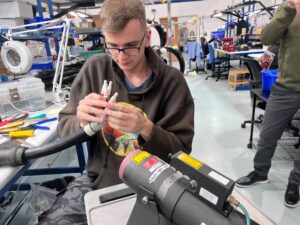
Navigating Excellence: NAVY Shipboard Cable ASSEMBLIES for Maritime Precision
Embark on a journey of maritime connectivity with our premium Shipboard cable assemblies. Crafted to withstand the rigors of the open sea, these cables are engineered for durability, flexibility, and reliable performance in the challenging conditions of maritime environments.
What is a Navy Shipboard Cable Assembly?
Shipboard cables are specialized electrical, or fiber optic cables designed for deployment on Navy Surface Ships and Submarines. These cables are meticulously crafted to meet the demanding requirements of maritime applications under cognizant agencies such as: The Navy Supervisors of Shipbuilding, Conversion and Repair, (SUPSHIP) serving as the Navy’s on-site technical, contractual, and business authority for the construction of Navy vessels at our shipyards. SUPSHIP’s serve as Naval Sea System Command’s (NAVSEA) waterfront technical authority. NAVSEA serves as a critical organization responsible for engineering, building, supporting, and maintaining the Navy’s fleet of vessels. From overseeing ship construction to ensuring quality and reliability, NAVSEA plays a vital role in naval operations.
Roles of Industry Leaders and Trek Customers
- Lockheed Martin: Ship Systems and Integration: Lockheed Martin contributes to NAVSEA through its ship systems and integration capabilities. This includes the design, construction, and integration of advanced systems on naval vessels, such as combat systems, sensors, and communication systems.
Submarine Systems: Lockheed Martin is involved in the development and maintenance of submarines, providing expertise in submarine systems, including propulsion, combat systems, and underwater technologies. - Raytheon: Naval Weapon Systems: Raytheon is a major provider of naval weapon systems, including missiles, radar systems, and electronic warfare technologies. These systems contribute to the offensive and defensive capabilities of naval vessels.
Sensor Systems: Raytheon provides advanced sensor systems for naval platforms, enhancing situational awareness and targeting capabilities. This includes radar, sonar, and surveillance systems. - General Dynamics: Shipbuilding and Maintenance: General Dynamics is a significant player in naval shipbuilding, providing services ranging from the construction of new ships to maintenance, repair, and modernization of existing ones. This includes Arleigh Burke-class, DDG-1000 Zumwalt Class surface ships and Virginia SSN, Ohio SSBN, SSGN, and Columbia Class submarines.
Combat Systems: General Dynamics contributes combat systems, including command and control systems, weapons, and communication technologies, enhancing the overall capabilities of naval vessels. - Huntington Ingalls (HII) A key player in naval shipbuilding, constructing a variety of ships for the U.S. Navy. This includes aircraft carriers, amphibious assault ships, destroyers, and other surface combatants.
Huntington Ingalls specializes in the construction of nuclear-powered ships. They are responsible for building and maintaining nuclear-powered aircraft carriers and submarines, which are critical components of the U.S. Navy’s fleet.
Applications
- Advanced Local Area Network (LAN): Integrated Networks, Data Transmission and Communication, Navigation and Combat systems such as Aegis Weapons System, Common Weapons Launch (CWL), Command and Control, Machine Control, and Maintenance and monitoring.
- Power Distribution: Shipboard cables play a crucial role in power distribution systems on vessels, ensuring a reliable and efficient supply of electrical power to various components and systems.
- Lighting Systems: Designed for lighting applications on ships, these cables provide a dependable and resilient solution to illuminate different areas of the vessel, even in challenging maritime conditions.
- Communication Systems: Shipboard cables facilitate seamless cyber secure (TEMPEST) encrypted classified communication on ships, connecting navigation equipment, radios, and other critical systems for efficient and reliable data transmission.
- Navigation Equipment: Essential for powering and interconnecting navigation equipment, shipboard cables contribute to the precision and accuracy required for safe navigation at sea.
Materials
- Military-grade connectors: Play a crucial role in ensuring secure and reliable connections within complex electronic systems used in military and aerospace applications. These connectors are designed to withstand harsh environments and rigorous conditions. Military connectors are built to protect connections from environmental factors such as extreme temperatures, moisture, EMI Shielding, vibration, and shock. They are specifically engineered to withstand the demanding conditions encountered in military and defense systems.
- Connectors, Aluminum: Aircraft grade bar stock aluminum is a common connector material used in military cable assemblies. Available with many plating alternatives to match to appliable environment. It is lightweight and offers good electrical conductivity, making it ideal for use in applications where weight is a concern.
- Connectors, Stainless Steel, passivated: CRES, or Corrosion Resistant Steel is another common connector material used on military cable assembly connectors. These connectors have a longer lifespan due to their improved resistance to rust and corrosion.
- Connectors, Composite: offer several advantages over traditional metal connectors in specific applications such as, Light weight, Corrosion Resistance.
- Shipboard Cable, Copper: Copper is a common material used for conductors in military cable assemblies due to its excellent conductivity and durability. It is commonly used for power and signal transmission. Tin-Plated copper and or Silver-Plated copper conductors improve performance. Typical construction, single conductors, multi-conductors, shielded or unshielded twisted pairs, twisted triads are common along with overall cable shield options. Low Smoke Zero Halogen (LSZH) jacket is standard.
- Fiber Optic Cable: Low Smoke Zero Halogen (LSZH) Fiber optic cable, both Single Mode and Multi Mode are used in military applications where high-speed data transmission is required. It is lightweight, durable, and resistant to electromagnetic interference.
- Coaxial, Triaxial Cable: Low Smoke Zero Halogen (LSZH) Coaxial or Triaxial cable is commonly used in military communication applications for its ability to transmit high-frequency signals with low signal loss.


